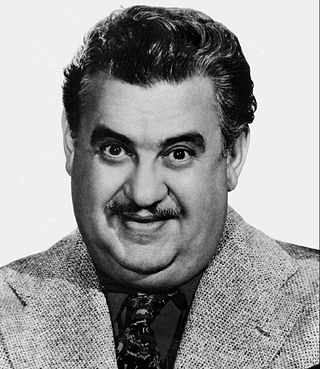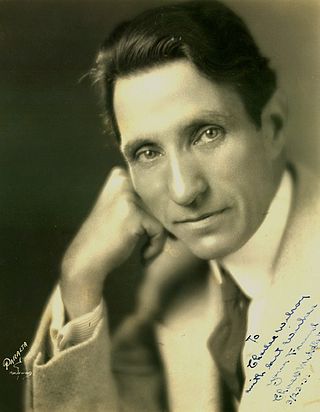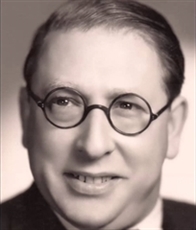
Ronald Neame CBE, BSC was an English film producer, director, cinematographer, and screenwriter. Beginning his career as a cinematographer, for his work on the British war film One of Our Aircraft Is Missing (1943) he received an Academy Award nomination for Best Special Effects. During a partnership with director David Lean, he produced Brief Encounter (1945), Great Expectations (1946), and Oliver Twist (1948), receiving two Academy Award nominations for writing.

William Gilbert Barron, known professionally as Billy Gilbert, was an American actor and comedian. He was known for his comic sneeze routines. He appeared in over 200 feature films, short subjects and television shows beginning in 1929.

Orry-Kelly was the professional name of Orry George Kelly, an Australian-American Hollywood costume designer. Until being overtaken by Catherine Martin in 2014, he was the most prolific Australian-born Oscar winner, having won three Academy Awards for Best Costume Design.
Heinz Roemheld was an American composer.

Charles Brown Middleton was an American stage and film actor. During a film career that began at age 46 and lasted almost 30 years, he appeared in nearly 200 films as well as numerous plays. Sometimes credited as Charles B. Middleton, he is perhaps best remembered for his role as the villainous emperor Ming the Merciless in the three Flash Gordon serials made between 1936 and 1940.
Mutz Greenbaum, sometimes credited as Max Greene or Max Greenbaum, was a German film cinematographer.
Alfred Junge was a German-born production designer who spent a large part of his career working in the British film industry.
Marcel Varnel was a French film director, notable for his career in the United States and England as a director of plays and films.
Ian Dalrymple was a British screenwriter, film director, film editor and film producer.
Leslie Arliss was an English screenwriter and director. He is best known for his work on the Gainsborough melodramas directing films such as The Man in Grey and The Wicked Lady during the 1940s.
Leo Frank Forbstein was an American film musical director and orchestra conductor who worked on more than 550 projects during a twenty-year period.

Louis Levy was an English film music director and conductor, who worked in particular on Alfred Hitchcock and Will Hay films. He was born in London and died in Slough, Berkshire.

Willard Robertson was an American actor and writer. He appeared in more than 140 films from 1924 to 1948. He was born in Runnels, Texas and died in Hollywood, California.
Peter Gawthorne was an Anglo-Irish actor, probably best known for his roles in the films of Will Hay and other popular British comedians of the 1930s and 1940s. Gawthorne was one of Britain's most called-upon supporting actors during this period.
Lee Zahler was an American composer and musical director of films, starting in the 1920s and well into the 1940s.
Walter Charles Mycroft was a British journalist, screenwriter, film producer and director. In the 1920s he was film critic of the London Evening Standard, and a founder of the London Film Society, before joining the film industry.
Jack Beaver was a British film score composer and pianist. Beaver was born in Clapham, London. He studied at the Metropolitan Academy of Music, Forest Gate and then at the Royal Academy of Music under Frederick Corder. After graduating he worked for the BBC. In the early 1930s he played with the Michael Doré Trio and wrote some concert pieces, including the three movement Sonatina for piano. He also contributed music and arrangements for various BBC radio drama and music features, including most of the radio adaptions of films produced by Douglas Moodie, throughout the 1930s and 1940s.
Lawrence J. Darmour (1895–1942) was an American film producer, operator of Larry Darmour Productions from 1927, and a significant figure in Hollywood's low-budget production community.

Ubaldo Arata was an Italian cinematographer. Arata worked on more than a hundred films between 1918 and his death in 1947. Arata entered cinema in the silent era and worked prolifically during the 1920s including on one of the final entries into the long running Maciste series. He was employed on the first Italian sound film The Song of Love (1930). Until the fall of Fascism, he was one of the leading Italian cinematographers working on propaganda films such as Scipione l'africano and Luciano Serra, Pilot (1938) as well as more straightforward entertainment films.
Arne Åkermark (1902–1962) was a Swedish art director who worked on around a hundred and eighty films during a thirty-year career.







